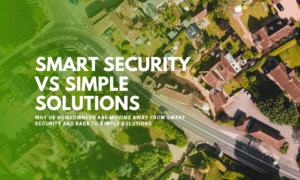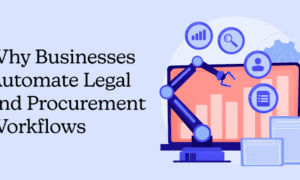Databases are the most critical parts of a company’s IT infrastructure. They also pose unique security challenges. Despite the presence of advanced infrastructure security tactics, many companies neglect basic security processes, rendering those advanced tools ineffective.
A secure database is necessary to protect against malicious attacks. Here are four ways companies can secure their databases.
Invest in physical security
Most cybersecurity processes exist online and many companies make the mistake of focusing exclusively on them. Physical database security is just as important as online processes. After all, every database has backing from a data center, filled with physical servers.
Physical security tactics like secure locks, camera feeds, and security personnel are critical in this context. Companies must validate every person accessing the data center, whether employees or third parties.
Conducting regular sweeps of the data center is another time-tested physical security tactic. Malicious actors might compromise server security by rerouting data feeds to their machines, creating the ideal conditions for a data breach.
Companies can conduct such sweeps once every month to ensure no such incidents will occur. The frequency of these sweeps depends on the size of the data center and the number of people accessing it. The bigger the center and the greater the number of people with access, the higher a company’s sweep frequency must be.
Following security frameworks such as ISO 27001, 20000-1, SSAE 18 SOC Type 1, and Type 3 are excellent ways of validating physical security practices. Companies can adopt these to hit the ground running.
Separate databases
Storing sensitive and non-sensitive data on the same database is asking for trouble. Companies must segregate these data sets on different servers. While this advice might seem intuitive, many companies neglect this in favor of reducing storage costs and placing all their data on a few servers.
While this approach might appear to reduce costs on the surface, it compromises security, ultimately increasing costs. Databases with sensitive data need specialized security measures, something impossible to install if all kinds of data are present on a single server.
For instance, making only sensitive data while leaving the rest unaffected is challenging when everything is present on the same server. Storing different kinds of data on the same server also increases an attack footprint.
A simple website breach might give attackers access to sensitive data, increasing the breach footprint dramatically. While cybersecurity tools like EDR and SIEM detect breaches and reduce lateral movement within a network, they work better when companies follow the basics of database security.
Use a secure proxy server
Proxy servers are valuable tools when protecting databases. These servers evaluate traffic before sending it to the main server. In essence, proxies are gatekeepers that allow only authorized traffic to flow through.
When dealing with sensitive information, using an HTTPS server is a no-brainer. For instance, if a company stores sensitive customer information, using HTTPS proxy servers will add another layer of security, preventing malicious attacks.
While HTTPS proxies won’t eliminate malicious traffic by themselves, they work well in tandem with other database security tactics. For instance, encryption combined with proxy servers works well. Companies usually encrypt all network data as standard.
Extending encryption to proxy server data adds a secure layer that malicious actors have to contend with, reducing the odds of an attack.
Monitor databases in real-time
Companies must constantly scan their databases for breach attempts in real-time. Real-time monitoring dramatically reduces the odds of an attack spreading laterally. Companies must also automate this kind of monitoring and use tools that can mitigate malicious actions before human intervention.
Designing robust processes is the key to effective database monitoring. For instance, companies must design the right escalation workflows to use human intervention when the situation demands it. A combination of automation and human creativity will stop most attacks in its tracks.
Other processes like continuous security validation and penetration testing (pentesting) are critical too. Companies must task their security teams with interpreting continuous validation reports and conducting deeper pentests based on the vulnerabilities found there.
Follow- ups after pentests are critical too. Many companies conduct pentests only to drop follow-ups since they take time away from everyday activities. Logging all actions and ensuring security teams follow up on each weakness identified in pentests is critical to securing databases.
Database security is critical
Databases are the beating heart of any company’s operations and securing them is critical. While most companies acknowledge the importance of securing databases, few follow through with robust processes.
Tools will prevent malicious actors most of the time but they need backup from company workflows. The tips in this article will ensure companies cover all bases and protect their sensitive data at all times.



































